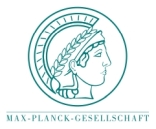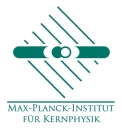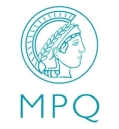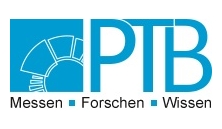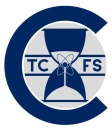Max Planck-RIKEN-PTB Center for
Time, Constants and Fundamental SymmetriesResearch Topics
The broad research portfolio of the Max Planck-RIKEN-PTB Center for Time, Constants and Fundamental Symmetries encompasses
crucial / timely / hot topics of current
interests in metrology, specifically time, constants and fundamental symmetries. Particular
areas of interest include new clock developments based on atoms, nuclei and highly charged
ions, the improved determination of fundamental constants like the fine structure constant
α, the Rydberg constant R∞, the proton charge radius, and stringent tests of fundamental
interactions and their symmetries using, e.g. protons and antiprotons.
To be more specific, the scientific work includes the investigation of topics including the following:
- Sympathetic cooling of antiprotons by resonant coupling to laser-cooled beryllium ions
Involved senior scientists and institutions:
K. Blaum, H. Katori, C. Ospelkaus ,
P. Schmidt,
T. Udem,
S. Ulmer
-
MPIK,
MPQ,
PTB,
RIKEN
,
P. Schmidt,
T. Udem,
S. Ulmer
-
MPIK,
MPQ,
PTB,
RIKEN
- Direct high-precision measurement of the magnetic moment of 3He to establish a new standard for ultra-sensitive absolute magnetometry
Involved senior scientists and institutions:
K. Blaum, A. Mooser ,
S. Ulmer
-
MPIK,
RIKEN
,
S. Ulmer
-
MPIK,
RIKEN
- Transportable Antiproton Containers
Involved senior scientists and institutions:
K. Blaum, C. Ospelkaus ,
C. Smorra
,
C. Smorra  ,
S. Ulmer
-
MPIK,
PTB,
RIKEN
,
S. Ulmer
-
MPIK,
PTB,
RIKEN
- Advanced ion traps and ion manipulation techniques
Involved senior scientists and institutions:
K. Blaum, J. R. Crespo ,
T. Mehlstäubler,
A. Mooser
,
T. Mehlstäubler,
A. Mooser  ,
C. Ospelkaus
,
C. Ospelkaus  ,
T. Pfeifer,
P. Schmidt,
C. Smorra
,
T. Pfeifer,
P. Schmidt,
C. Smorra  ,
S. Sturm
,
S. Sturm  ,
T. Udem,
S. Ulmer
-
MPIK,
MPQ,
PTB,
RIKEN
,
T. Udem,
S. Ulmer
-
MPIK,
MPQ,
PTB,
RIKEN
- High-resolution spectroscopy of hydrogen
Involved senior scientists and institutions:
T. Hänsch, E. Peik, T. Udem - MPQ, PTB
- Hydrogen lattice clock
Involved senior scientists and institutions:
T. Hänsch, H. Katori, C. Lisdat ,
E. Peik,
T. Udem,
S. Ulmer
-
MPQ,
PTB,
RIKEN
,
E. Peik,
T. Udem,
S. Ulmer
-
MPQ,
PTB,
RIKEN
- Th-229 nuclear clock
Involved senior scientists and institutions:
J. R. Crespo ,
H. Katori,
E. Peik,
T. Pfeifer,
T. Udem
-
MPIK,
MPQ,
PTB,
RIKEN
,
H. Katori,
E. Peik,
T. Pfeifer,
T. Udem
-
MPIK,
MPQ,
PTB,
RIKEN
- Optical and XUV clocks based on highly charged ions
Involved senior scientists and institutions:
K. Blaum, J. R. Crespo ,
H. Katori,
T. Mehlstäubler,
T. Pfeifer,
P. Schmidt,
T. Udem,
S. Ulmer
-
MPIK,
MPQ,
PTB,
RIKEN
,
H. Katori,
T. Mehlstäubler,
T. Pfeifer,
P. Schmidt,
T. Udem,
S. Ulmer
-
MPIK,
MPQ,
PTB,
RIKEN
- Transportable optical clocks
Involved senior scientists and institutions:
G. Grosche ,
H. Katori,
C. Lisdat
,
H. Katori,
C. Lisdat  ,
T. Mehlstäubler,
E. Peik,
P. Schmidt,
H. Schnatz
,
T. Mehlstäubler,
E. Peik,
P. Schmidt,
H. Schnatz  ,
U. Sterr
,
U. Sterr  ,
T. Udem
-
MPQ,
PTB,
RIKEN
,
T. Udem
-
MPQ,
PTB,
RIKEN
